
Review: Sony DWZ Series
Sony’s DWZ series will find you clear space on the wireless spectrum.
Review:/
Some choose wireless so they can be free; some use it because the production demands it. It’s a handy technology, but not without compromise. Not being physically connected has traditionally meant a reduction in sound quality and the possibility of drop-outs or interference. That’s after you’ve figured out any frequency/channel problems… and there are always some of those if you’re stacking lots together.
Sony has considerable expertise in wireless systems and their analogue belt-pack transmitters enjoy a reputation for reliability and good sound quality. But I’ve seen firsthand the frustration of the drama teacher at the dress rehearsal as he frantically phones the hire company that supplied the belt-packs and receivers because he can’t get them all working. And it’s always because the frequencies don’t match (to be fair, once one had a flat battery).
DIGITAL DIVIDENDS
It’s all digital now though, and everything has changed. Sony’s new DWZ series consists of the DWZ-M50 vocal pack that gives you a handheld wireless microphone and a half-rack receiver. The DWZ-B30GB guitar/bass pack has a belt-pack transmitter and a compact, made-especially-for-guitar receiver. Both operate at 24-bit/48k PCM digital audio that provides a much flatter and wider frequency response and a wider dynamic range than wireless analogue.
The DWZ Series operates in the 2.4GHz range of radio frequencies. This range is popular as it’s unregulated, internationally compatible and won’t suffer interference from TV and DTV signals. It’s also used by a wide range of devices including Wi-Fi routers, wireless phones, etc. So both packs offer a choice of RF modes. Wide-band frequency hopping mode (sounds like fun) reduces interference from things like Wi-Fi, and has the most error correction, but the latency is quoted as 6ms (longish). Narrow-band hopping reduces interference from things like lighting controllers and is better if using multiple units at the same time. It also has a lower latency of 3ms (better).
It’s great the way that modern digital wireless systems change frequencies to avoid interference and make channel selection easy, or automatic. Avoiding interference with the DWZ Series is automatic once you’ve set your RF type and any frequency changing going on in the background is imperceptible. Each device in the series has its own way of doing things but I found them all to be easy and intuitive to drive.
ASK & RECEIVE
The ZRX-HR50 half-rack receiver is immediately friendly. It has a bright screen and big clear information about its current status, and a main rotary-encoder inside a bright yellow circle that asks to be tweaked. If pushed, it brings up the options. The language and labelling is simple, there are not too many options, and I found my way around confidently from the start. A five-band equaliser and a feedback reducer are handy inclusions. It’s unusual having the option of EQ on a receiver of this type and while it’s good if the user is aware it’s there, it can be a trap for the unwary. It got me. When I first fired up the system, I thought the mic sounded crappy. I noticed the EQ-On display on the screen eventually but it’s not the first thing your eye sees. The feedback reducer is fun to play with, you can adjust its effect level in real-time, and it works up to a point, but it’s no substitute for having the gain/EQ correct so the system is stable in the first place. Outputs include a balanced out for the PA or recording, an unbalanced main out to feed an on-stage amp, and a dedicated tuner out.
The ZRX-C30 receiver is designed for electric guitars and includes some clever features. Firstly, it’s small enough to fit into a pedal board, and it can be powered by a Boss-type 9V supply, with a 12V transformer, or with batteries. It has a yellow-ringed rotary channel selector and a switch labeled Cable Tone Generator that mimics unbalanced cables by progressively reducing high frequencies. Outputs are the same as the ZRX-HR50.
TRANSMITTERS
Transmitters start with the ZTX-MO1 handheld wireless microphone. The supplied Sony dynamic capsule is good quality and voiced for vocal use with a boosted response from 3-8kHz, a wide address angle and good resistance to plosives due to a sharp roll-off below 100Hz. Handling noise is quite high. Other capsules are available as part of the DWX series and you can use third-party capsules from Shure and Neumann, though Sony warns using them may lead to RF or EMF noise problems. Channel switching is achieved by unscrewing the lower part of the metal body to reveal a small screen and button. And encryption is offered for the covert. The mic takes two AA rechargeable batteries that can be charged with the optional BCD-WZ1 contactless battery charger. Instead of slotting the mic into the charger until the contacts meet, the mic conveniently drops into a recess and gets charged by induction, which is a lovely touch.
The transmitter for guitars and headset mics is the ZTX-BO1 belt-pack. It’s a solid little unit that feels durable in a metal case and I think it would survive being stood on, which is my test for belt packs as they sometimes come off and end up on stage… a dangerous place. I like the quick-release battery holder and semi-recessed switches. Channel selection is via a little screen right in the middle of the unit, and a button to do the selecting. Again, easy to use, and lockable to avoid accidental changes. I’m always concerned about the dangers of wireless systems for guitarists. Last weekend at Chopped (three days of hot rods, dirt drags and crazy loud bands) the guitarist from the alcohol-fuelled band Gay Paris got passed onto the FOH speakers by the crowd and played the last couple of songs of their set from the top of the stage left speaker stack… because he had a wireless system. And then there’s the risk of the guitarist appearing at the FOH desk yelling instructions about how loud his/her guitar should be in the mix. Apart from encouraging this sort of behaviour, the ZTX-BO1 combined with the ZRX-30 makes a great system for guitarists who like to run around. The signal it transmits is clean and accurate, and with 10mW of RF output power they can run a long way. The power options, size of the receiver and Cable Tone Generator are all strong design features that users will appreciate. Sony headset and lavalier mics are available as options.
WIDE BAND OF USE
During my testing I didn’t hear any interference, drop-outs etc but these things are hard to simulate. The latency of 6ms (in wide-band hopping mode) is relatively high and while it’s not going to be noticed in any spoken word context, if it’s combined with the latency of a digital console and/or other digital processors it could result in a total latency long enough to be audible and distracting, particularly for a performer using in-ear-monitors. Using narrow-band hopping will help where possible.
The Sony DWZ series is aimed at bands and performers who want solid performance and good value for money. Both build and audio quality are high and all parts of the system are easy to use. The series would also be perfect for corporate presentations, public meetings, schools, etc… and should make life easier for drama teachers everywhere.
MORE INFO
Sony DWZ Series
Digital Wireless System
PRICE
Packages from $529
Battery Charger $329
CONTACT
Sony Professional: (02) 9887 6666 or pro.sony.com.au
SUMMARY
Sony’s DWZ series is serious enough to satisfy most applications where latency isn’t the number one issue. Built well, and with plenty of tricks up its sleeve, it’ll slip into space required.


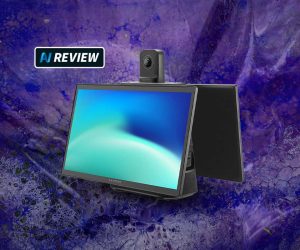


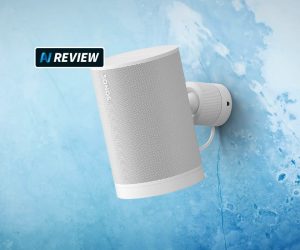

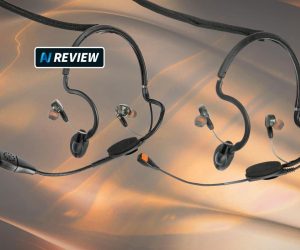
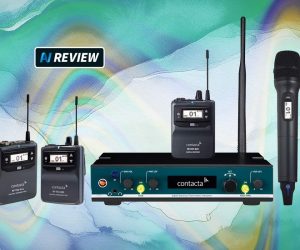



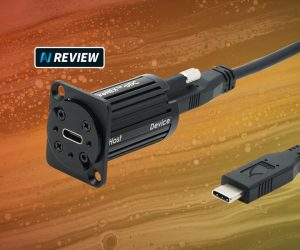


RESPONSES